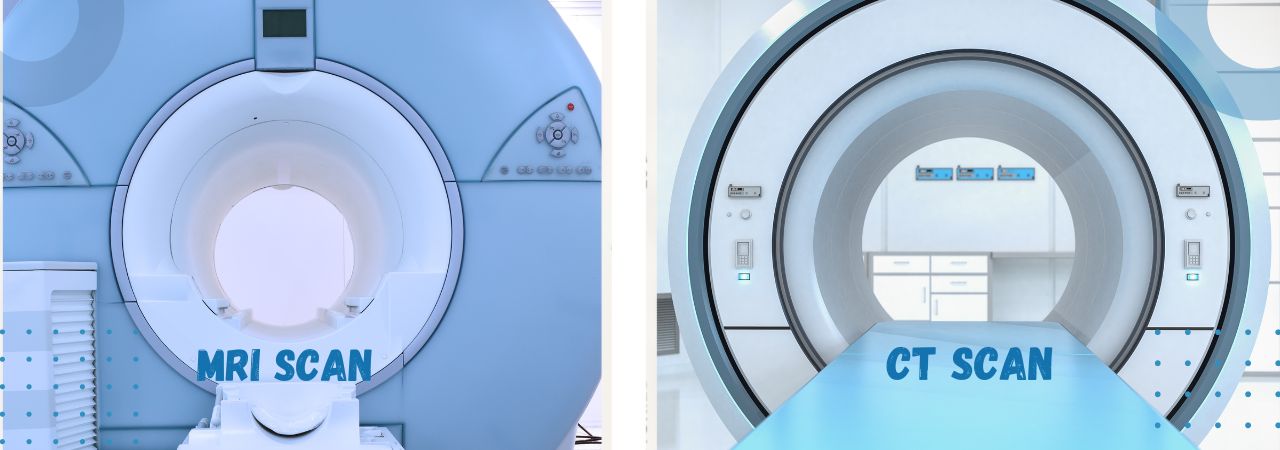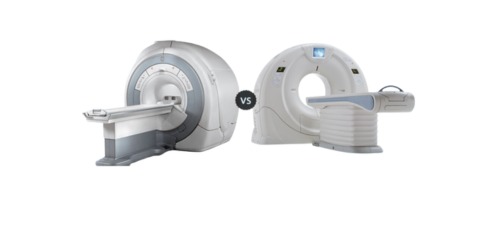
CT Scans vs. MRI Scans: Understanding the Differences and When to Use Each Imaging Technique
- Medical imaging plays a crucial role in modern healthcare, aiding in the diagnosis and treatment of various medical conditions. Two commonly used imaging techniques are CT scans (Computed Tomography) and MRI scans (Magnetic Resonance Imaging). While both methods offer valuable insights into the human body, they have distinct features and applications. In this article, we will explore the differences between CT scans and MRI scans, helping you understand when each imaging technique is most appropriate for specific medical scenarios.

CT Scans:
The Power of X-ray Imaging CT scans utilize X-rays to create detailed cross-sectional images of the body's internal structures. The X-ray machine rotates around the patient, capturing multiple images from different angles. A computer then assembles these images into a 3D representation. CT scans are particularly effective in visualizing bones, tissues, and organs, making them valuable for detecting fractures, tumors, and internal injuries.
MRI Scans:
Harnessing Magnetic Resonance MRI scans, on the other hand, employ powerful magnets and radio waves to generate detailed images of soft tissues, such as muscles, nerves, and organs. This imaging technique is especially adept at differentiating between different types of tissues based on their water content and molecular composition. MRI scans are often used for diagnosing conditions affecting the brain, spinal cord, joints, and abdomen.
Radiation Exposure:
CT Scans vs. MRI Scans One significant difference between CT scans and MRI scans is radiation exposure. CT scans involve the use of X-rays, which expose patients to a small amount of ionizing radiation. In contrast, MRI scans do not use ionizing radiation, making them a safer option, particularly for pregnant women and children.
Imaging Speed and Comfort
CT scans are generally quicker than MRI scans, making them an excellent choice for patients who may have difficulty lying still for extended periods. However, some patients may find MRI scans more comfortable due to the absence of loud noises and the enclosed space found in some MRI machines.
Contrast Agents:
When Enhancement is Necessary Both CT and MRI scans can be enhanced with contrast agents to improve the visualization of certain tissues or blood vessels. CT contrast agents contain iodine, while MRI contrast agents contain gadolinium. Understanding when and how to use these contrast agents is essential to maximize the diagnostic value of each imaging technique.
Clinical Applications:
Choosing the Right Imaging Modality The choice between CT scans and MRI scans depends on the specific clinical question and the area of the body being examined. We'll explore various medical scenarios and discuss when each imaging technique is preferred, such as in cases of head injuries, abdominal issues, spinal conditions, and cancer detection.
Cost Considerations and Availability
The cost and availability of CT and MRI scans can also influence the decision-making process. We'll provide insights into these aspects, helping patients and healthcare providers make informed choices while considering factors like insurance coverage and healthcare facility resources.
Conclusion:
Utilizing the Right Tool for Precision Diagnosis CT scans and MRI scans are invaluable tools in modern medicine, each with its unique strengths and applications. Understanding the differences between these imaging techniques allows healthcare professionals to select the most appropriate modality for each patient's specific needs. By harnessing the power of CT and MRI scans, healthcare providers can ensure accurate diagnoses, timely treatments, and improved patient outcomes.
Subscribe to our
Newsletter
***We Promise, no spam!




